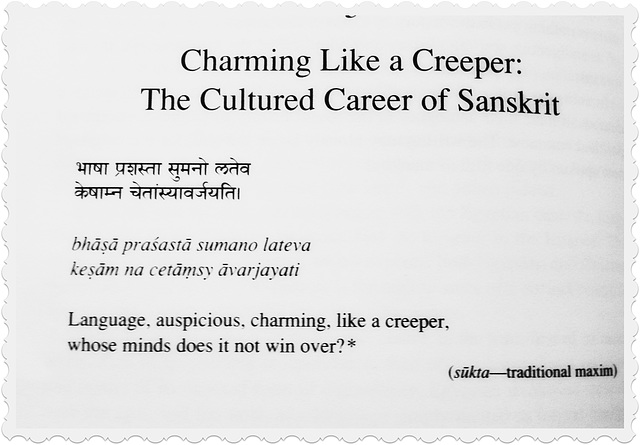South-East Asian scripts of Indian origin
The roots of Sanskrit's charm
Delaware Water Gap
Nahuatl lyric
Hush Puppies
Tree of Life
Minihaha fall
Witing on the table
Capitol
Capitol
The Haven
View From Guthrie Theater tower
View From Guthrie Theater tower
View From Guthrie Theater tower
Stream
I am not a person
Misgivings
Sociobiology
View From Guthrie Theater tower
Philosophy Day ~ 11/21/2013
Paul Berg
Egg currey
Farmers Market
Farmers Market
Farmers Market
Gladious
Photographer
Snow White's visit
Size of a carbon atom
Minneapolis
Minneapolis
Hammered Dulcimer (Santoor)
Minihaha Falls
Ukulele player
"Ludul Bel Nemeqi" - I will praise the Lord of Wis…
An Artist
Mall of America
Mall of America
Mall of America
Mall of America
How English has changed over the last 1000 years
Keywords
Authorizations, license
-
Visible by: Everyone -
All rights reserved
- Photo replaced on 08 Oct 2013
-
114 visits
Photo by Dinesh


- Keyboard shortcuts:
Jump to top
RSS feed- Latest comments - Subscribe to the comment feeds of this photo
- ipernity © 2007-2024
- Help & Contact
|
Club news
|
About ipernity
|
History |
ipernity Club & Prices |
Guide of good conduct
Donate | Group guidelines | Privacy policy | Terms of use | Statutes | In memoria -
Facebook
Twitter

Although it is religious tradition which has proved the most reliable preserver of Sanskrit in many an avatara (‘decent’, or of a divine being from heaven), and despite the heavy association, in the West today, of the language with transcendental spiritualism, Sanskrit was never just liturgical language. ~ Page 175
We begin with an outline of how Sanskrit was spread across Asia.
A dialect of Indio-Iranian, it was first heard of in the North West Frontier area of Swat and the northern Punjab (not in Pakistan), spoken by people who have evidently come from farther north or west, and who like to call themselves ‘arya’ (later a common word for ‘gentleman’, and always the Buddhists’ favorite word for sheer nobility of spirit). Somehow their descendants, and even more their language, spread down over the vast Indo-Gangetic plain, as well as up into the southern reaches of the Himalaya mountains, so that by the beginning of the fifty century BC the language was spoken in an area extending as far west as Bihar, and as far south, perhaps, as the Narmada. Sabnskrit literature from the period, principally the epic poem Mahabharata and Ramayana is full of military exploits and conquests. ~ Page 176
But in another way this widespread embrace of Indian coulture is highly reminiscent of the enthusiasm for Americana that captured the whole world, and certainly the South East Asian region, in the second half of the twentieth century. In that advance too the primary motives were the growth of profits through trade, and a sense that the globally connected and laissez-faire culure that came with the foreigners was going to raise the standard of life of all who adopted it. As with the ancient advance of Indianisation, there has been little or no use of the military to reinforce the advance of Microsoft, Michael Jackson or Mickey Mouse. There has been little sense that the advance is planned or coordinated by political powers in the centre of innovation, whether in India then or in the USA today. And the linguistic effects are similar too: English, like Sanskrit, has advanced as a lingua franca for trade, international business and cultural promotion. ~ Page 179
In every sense of the word, then, Sanskrit is a luxuriant language, Sir William Jones, Chief Justice of India and founder of the Royal Asiatic Society, memorably described it in 1786: “The Sanskrit language, whatever may be its antiquity, is of a wonderful structure; more perfect than the Greek, more copious than the Latin, and more exquisitely refined than either.” ~ Page 185
Sign-in to write a comment.